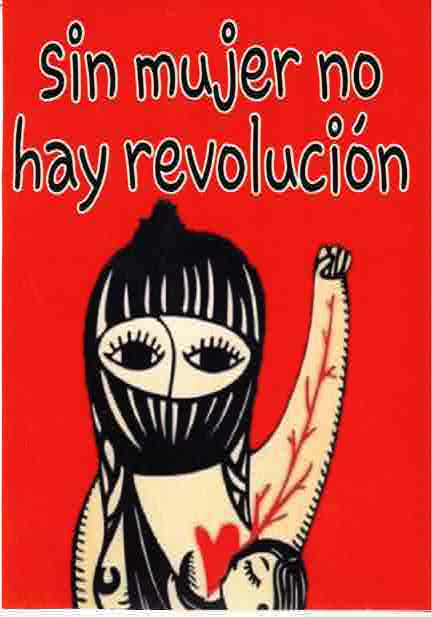After seven years of not going, I finally went back. Back to my Mayan family and Mayan mother who called me on What’s App to say she missed me, and to whom I replied, I will come at Christmas. I went back and I went straight there: I did not arrive in the colonial city, at a hotel to sort my cargo first, to a hot shower and a bed that was guaranteed free of fleas, as I had always done before. Instead, I hired a taxi from the airport in Tuxtla to take me right there. I told the driver I was going to a community in Ixtapa; not the town of Ixtapa itself, but a bit before, so that he wouldn’t overcharge me. I knew full well the road there was not a piece of cake, but I kept this to myself.
We had some trouble finding the road. After so many years of not having gone there, I could no longer tell just which left turn it was. There was no sign on the main road identifying the turn-off like I recalled. Once we found it, the road was much improved and paved–at least until about two kilometers in, when it abruptly reverted to stones and uneven ditches. Will we make it? I asked the driver. Slowly, but we will, he said with certainty, the small taxi lurching on.
It’s pure culture out in these parts, said the driver as we passed various homesteads and went on and upwards, finally turning up onto the main street. I was amazed at the glass windows and exquisite detail on the new house fronts. When we got out of the car, my driver stared in marvel. What an incredibly beautiful place, I remember him saying, while I still felt concern for his car’s hardship on the road so far, and its inevitable return trip. The expansive, green vistas, hills and mountains were not just anyone’s country view, true. The taxi driver likes the land, I said to Tomás, and almost cried to see him again when we hugged outside the house, the house I barely recognized with its new additions and subtractions.
I knew the room I would be given, since I had slept in it last time. I knew his new wife too, more than I expected to–I had somehow understood she was from Ixtapa itself, when she was actually born in the village, and I recognized her family in her face. What I did not expect was the vase of three real roses Tomás had put on my bedside table, alongside a handmade embroidered heart ornament. When I first glanced at the flowers, I assumed they were plastic. I mean, who has real roses all the way out here, where survival always seemed much more important than beauty? Only later did I notice they were real, and expressed my delight to him. But that is just like the village, really: you don’t expect it to get you by the gut with what is real and true, but it always does. There is no artifice.
I knew this village when it was only two years old, and everyone living in it was poor. Now it was the wealthiest place in the valley, and the more established Spanish-speaking campesinos had nothing on it. It was indigenous, Spanish was not the language of currency, but these people were serious entrepreneurs, and gifted observers of life and its constant changes. They had rose gardens now. They sowed the seeds they fancied and made things happen. They were industrious, and had a wealth of wisdom and experience between them, because they all talked to each other, all the time.
The village was just what I needed, a balm. I drank up the constant togetherness and connection for seven days. I had been feeling lonely in Seattle before I left, and lying in the hammock enfolded by the warm living tapestry of close human and animal sounds was heaven. There is something about living in such close proximity that even Spanish-speaking Mexico cannot truly mimic. There are no walls in the village that one goes behind when going home. People are available to each other at all times. Talking trumps all, and hours and hours are spent in non-doing mode. When a car came through selling slices of cake, I bought three and we ate them on the airy deck. There is a freedom to be spur-of-the-moment when productivity is seemingly only a minor focus.
Reconnecting with my Mayan family was precious, and I enjoyed hearing and seeing the changes in people’s lives and feeling integrated and cared for by so many of the people I had become close to when doing my fieldwork. For instance, the wife of the village head who had died too young not long ago, and left massive grief in his wake–she accepted my perfume and lotions and necklace chain, all that I had to give her to say I understood her loss. My godson I loved when he was six, who was now 20 and had a young pregnant wife said openly, I missed you, why didn’t you come for so long? Miraculously, and unexpected by me, the wordless affinity between us that had made us choose one another when he was a small child was just as palpable now. And there are rituals. On New Year’s Eve, we had to cry and give it up to each other, ask forgiveness for any ways we might have wronged each other, back when.
And so I come and I go, and when I am not in the village I dream I am there, wearing a Tzotzil woman’s blouse and skirt, stepping barefoot on the bare earth outside the kitchen and seeing the next day’s corn boiling over the fire. In dreams and in life, when I go, I am included and loved by people whose inborn enlightenment has not yet been clouded, and their voices form a backdrop that sings like home, no matter if I understand perfectly what they say. To them, it has always been and will always be enough. Whatever they say, whatever I understand, and how I say it back, it doesn’t matter much because the exquisite nourishment of that belonging can hardly be put into words. Togetherness as the ultimate healing salve has never been in question there.
And so I came to trust it, what I felt earlier in my life when I was in my twenties and spent long stretches of time in this world of never-ending fresh corn tortillas and Tzotzil: there really is something special about this village. There is life and connection based on feeling, based on simple human relatedness. There is a way of living that is more who we are than we will ever be able to recapture in our Western worlds. We evolved living in constant cohabitation with others–and maybe that involves eating too much, too often, now that times have turned in the village–but people are richer and happier for it in ways we can only imagine. No one cares about being thin. No one cares about the push for productivity. Happiness comes from caring and being involved with other people’s lives. Giving what one can give. Not keeping it for oneself. I can’t help thinking that Tomás and his mother and whoever they learned it from, whoever keeps learning it from them, are the original bodhisattvas.


 Share on bsky
Share on bsky





Read 3 comments and reply